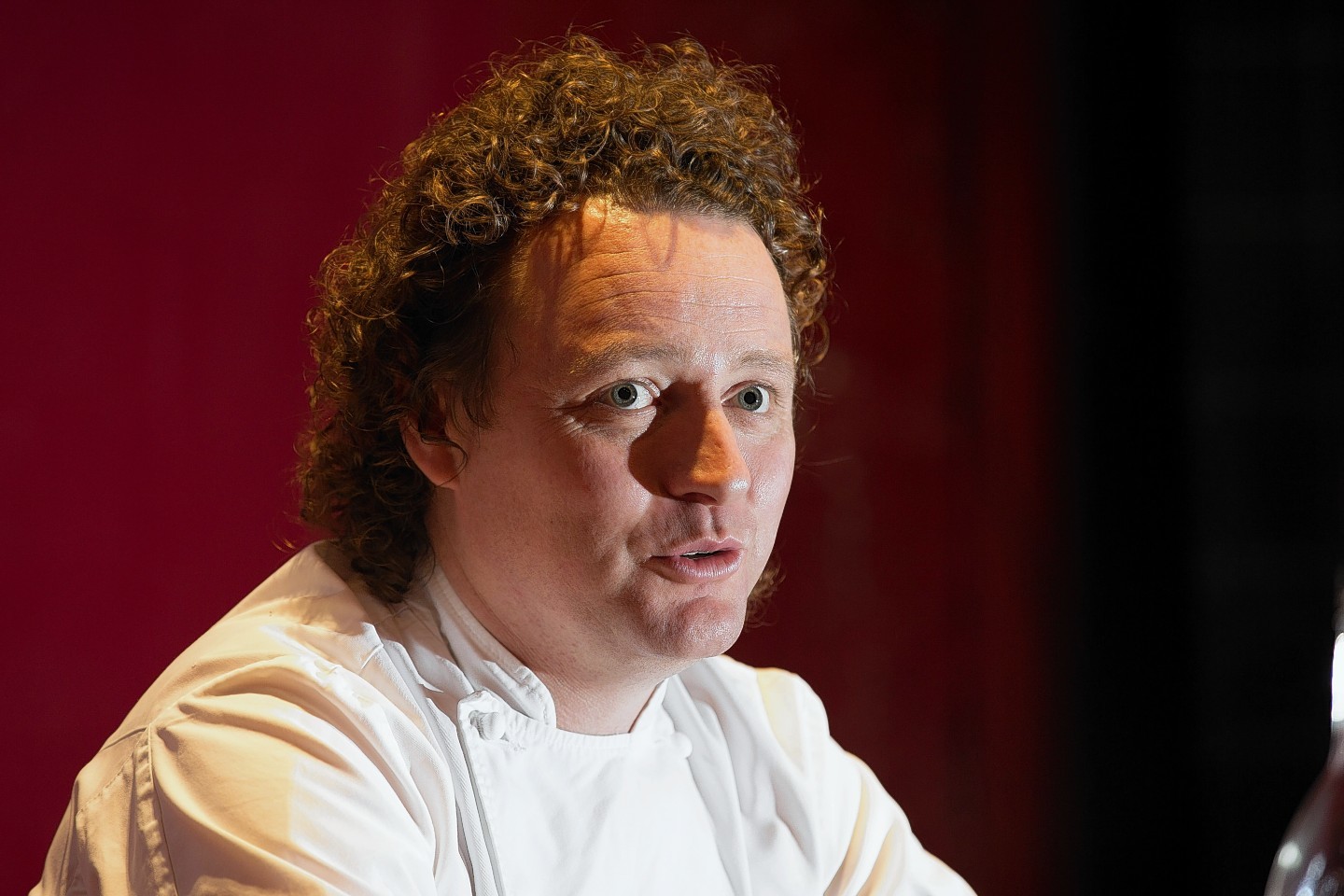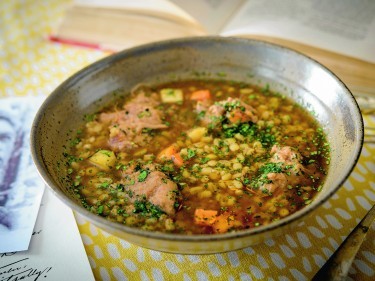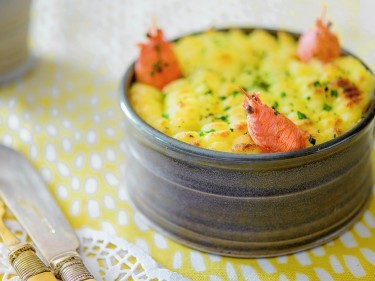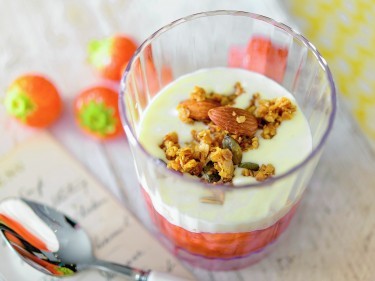It’s a thrill for me as a chef to take classic, traditional dishes and give them my own modern twist. It’s something chef Dominic Jack and I have had a lot of fun creating at our gastro pub, The Scran & Scallie.
Reworking old-fashioned ingredients and recipes is a wonderful way to get back to the roots of cooking. Think of those dishes your granny would have made, and her granny’s granny!
I take such joy in bringing them back to life and giving them a bit of a twist. For me, it’s been about rediscovering dishes that people have enjoyed for hundreds of years.
When I was asked by John Lewis to create a special heritage menu to celebrate its 150th anniversary, I had a lot of fun looking into the archives and creating some dishes that would have graced Scots’ dining tables 150 years ago.
John Spedan Lewis was the founder of the retailer back in 1864 and many of his principles are so true today – like his attitude to food.
I learned that he thought of eating as “one of the chief pleasures in life” – a statement I definitely wouldn’t argue with!
Scotch broth is a Scottish classic but I’ve made it in my own way, borrowing techniques from history from days when every single part of the produce would have been used.
It’s a principle I’m fanatical about in my own restaurant too – nothing should go to waste and in fact it’s a brilliant way to get flavour into your dishes.
Fish pie is another classic that can’t be beaten but back then, langoustines would have been used to decorate the fish pie to create a bit of theatre and a talking point at the table.
We have some of the best langoustines in the world here in Scotland, so what better way to show them off than in a stargazy fish pie?
The dessert to my heritage menu is a simple but delicious fruit fool. I was inspired by John Spedan Lewis’ wife Beatrice’s gooseberry fool, but wanted to give it a seasonal Scottish twist, so a strawberry fool seemed to fit perfectly. This dish used to be known as a foole, but was later shortened.
In my mind, we should all look back in history to find a little inspiration for our cooking – whether that’s borrowing a recipe from your granny, or looking back further in history.
I’m sure you’ll discover a whole new host of dishes to add your own modern twist.
SHEEP’S HEID SCOTCH BROTH
FOR THE STOCK
6kg roast lamb bones
10 carrots
1 celery
2 onions
6 sheep’s heids – roasted (or use equivalent in lamb neck or shoulder)
100g tomato paste
10 litres water
1 garlic bulb
To make the stock fry the carrots until lightly coloured. Add onions, garlic, celery, sweat for a few minutes. Add tomato paste and cook out, add sheep’s heids and cover with the water.
Bring to the boil, skim and simmer very gently for four to five hours, keep skimming any excess fat.
Strain/pass the stock through a fine sieve ad reserve the sheep heids.
When cool enough to handle pick the meat from the bones and remove all sinew.
FOR THE SOUP
1tsp salt
1 kg picked mutton heid or neck
1 large chopped onion
1 large chopped leek
100g broth mix
3 carrots peeled and diced
1 medium swede (rutabaga) peeled and diced
2 sticks celery
1 tbsp chopped parsley
Salt and pepper
Bouquet garni
Sweat the carrots, swede, onions, celery and garlic. Add broth mix and cover with warm lamb stock. Add bouquet garni and cook for 45 minutes or until vegetables are soft. Skim off any fat or scum. Season to taste with salt and freshly ground black pepper, finish with the picked sheep/lamb meat.
Serve while hot.
STARGAZY FISH PIE
SERVES 4-6
2 litres milk
600g firm fish fillets (salmon/hake/cod), diced into 2cm cubes
200g smoked fish fillet (smoked haddock)
4-6 prawns
2 hard boiled eggs, peeled and quartered
1kg Maris Piper potatoes
2 tbsp butter
Salt and pepper
1 beaten egg
Cleaned langoustine heads to decorate finished pie
FOR THE BECHAMEL SAUCE
500ml milk
60g butter
50g tbsp flour
2 tbsp grain mustard
Start by making the bechamel sauce.
First bring the milk up to a simmer in a small pot and set aside. In another pan, melt the butter gently over medium heat, then add flour and stir until the mixture is smooth. Now begin adding the milk a little at a time to avoid lumps. Keep adding milk and stirring, until you have a rich creamy sauce.
Allow to cook slowly for five minutes and then add the grain mustard. Set aside.
To cook the fish, gently heat the two litres of milk, taking care that it does not boil over. Add the raw fish fillets and poach in the milk for three to four minutes. Add the smoked fish and poach for a further three to four minutes. Carefully remove the fish and set aside.
To make the mashed potato, pre-heat the oven to 200°C/Gas 6. Place the potatoes on a tray and bake in a hot oven until crispy and soft. While still hot, scoop out the flesh, discard the skins and pass the potato through a drum sieve to remove any lumps. Heat the milk used for poaching the fish previously and add two tbsp butter and fold through potato mixture. Season to taste.
To assemble the pie: Preheat the oven to 190°C/Gas 5. Butter a baking dish and start to make the pie by first spreading a small amount of bechamel on the bottom of the dish. On top of that spread the poached fish and quartered eggs. Spread with the remaining bechamel.
Top with the mashed potatoes, place the langoustine heads in the potato, and brush with an egg wash.
Place baking dish on a tray and put into a preheated gas mark 5 oven for 30-40 minutes or until golden brown and bubbling.
SCOTTISH STRAWBERRY FOOL
SERVES 4
FOR THE STRAWBERRY COMPOTE
500g ripe, fresh Scottish strawberries
2 tbsp lemon juice (to taste)
4 tbsp caster sugar
Few drops of balsamic vinegar (to taste)
FOR THE CUSTARD
150ml double cream
150ml milk
2 egg yolks
30g caster sugar
To make the compote, cut the strawberries in half or quarters (if large) and put in a pan with the sugar and lemon juice. Heat gently until the sugar dissolves, then bring to a simmer.
Cover the pan and cook the strawberries for three minutes or until dark red and syrupy. Cool, then add the balsamic vinegar.
To make the custard, place the double cream and milk in a heavy bottomed pan and bring to the boil. Whisk the egg yolk and caster sugar in a bowl, then add the hot milk and cream.
Return all the ingredients back into the pan, and gently heating, stirring constantly. When it starts to thicken enough to coat the back of the spoon, it’s ready. Strain the mixture into a clean bowl and set aside to cool.
To serve, spoon the compote into individual glasses. Layer over the fool mix on top and serve with almond biscuits or shortbread.



